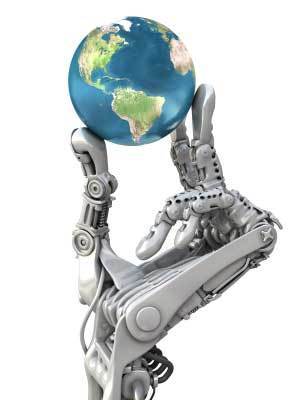It’s expensive to have a disability. Why? Is it cheaper to design and build for the masses than it is to design for inclusivity? Or, are our designers and builders just ignorant and don’t know any better? Or, is it because we still think that people with disabilities are rare? It’s expensive to have a disability because we still don’t apply universal design in our products and environments. A person with a disability still lives in a world built only for able-bodied adults. Assistive technology is necessary to survive and thrive, and it’s an added expense.
When writing this mini-series about assistive technology, it is tempting to talk about it and forget about universal design; to do so would be to miss an important point. Applied universal design reduces the need for assistive technology! Rather than a specialty item needed and procured at additional cost, the item is included. Rather than an individual feeling different, they feel belongingness.
The term, assistive technology, refers to a device that is used to “increase, maintain, or improve the functional capabilities of a person with a disability” (Congress’s Tech Act of 1998). For the purposes of legalities, such a definition is clearly necessary. However for day-to-day living, what isn’t assistive technology! My feet are slow so I use a car. That can of tuna doesn’t open with fingernails; I use a can opener. I don’t know my way in new places; I use a GPS. By a day-to-day definition, the only difference in what is assistive technology and what it isn’t is the degree to which it is commonly available and doesn’t put an added burden on some people and not others.
What universal design can do is have more assistive devices fall into the category of day-to-day and not as specialized items for people with a disability. The beauty is that as the technology is made common and integrated into the larger fabric of society, the user looses the distinction of being seen as different, being marginalized, or being burdened by an added expense. Another beauty is that often the invention for a few benefits the whole (think of close-captioning on the TV invented for hearing loss and now used in every sports bar).
As I write this series, I’ll strive to keep the focus on universal design and not get overly absorbed in the many cool and new technologies. My purpose is two fold: a) to demonstrate how universal design reduces the need by some people for specialized equipment just to do the things able-bodied adults take for granted; and, b) to have some of the assistive devices presented because they are important and they do make so much more possible for people living with a disability.
Six Part Assistive Technology Series, COMIN UP:
- Assistive Technology & UD, Part I: What Is It – September 13, 2010
- Assistive Technology & UD, Part II: Physical
- Assistive Technology & UD, Part III: Hearing Loss
- Assistive Technology & UD, Part IV: Vision Loss
- Assistive Technology & UD, Part V: Communication, Intellect & Development
- Assistive Technology & UD, Part VI: Conclusion

